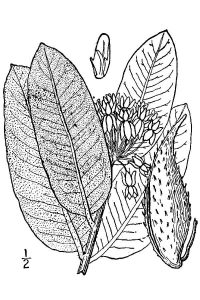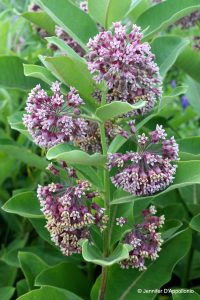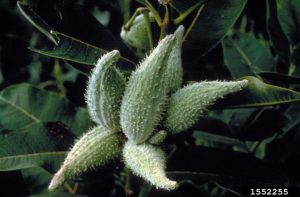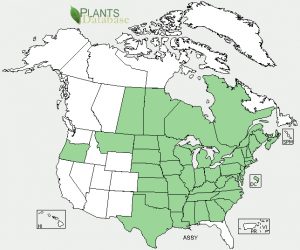Common Milkweed Fact Sheet

Common milkweed is a perennial, herbaceous plant that grows to heights of 2 to 6 feet on solitary stalks. Milkweed gets its name from the milky sap contained in its leaves and stems. Chemicals in this sap can be poisonous to animals. However, milkweed is an important food source for the Monarch caterpillar. Monarch butterflies lay their eggs on milkweed leaves, and the larvae (caterpillars) feed on the leaves until they form their chrysalis. Leaf toxins accumulate in the Monarchs’ bodies, making them poisonous to their predators. Many insects are attracted to milkweed flowers, making them an ideal landscaping plant for attracting pollinators. Native to the US, you will find milkweed throughout all of the eastern and mid-western states. However, milkweed habitat is being lost throughout the US due to development, agricultural practices, and mowing of roadside stands, posing a threat to Monarch populations.
Leaves: Pairs of leaves on short petioles (leaf stems) extend opposite each other from the single hairy stem. Leaves are large and oval in shape (4 to 8 inches long and 2 to 4 inches wide). The underside of the leaf is covered with fine hairs.

Flowers: Individual flowers are small (0.4 to 0.7 inches), consisting of five petals pink to purple in color. Flowers occur in round clusters (inflorescence) about two inches in diameter, and bloom from June through August.
Fruit: Milkweeds produce large seedpods (3 to 5 inches long) after flowering. Pale green and covered with bumps, the pods eventually turn brown and split open, releasing up to 200 flat, brown seeds. Silky white hairs attached to each seed facilitate wind dispersal.

Tips for Observing: Plants have a strong, extensive rhizome (underground stem) system. They are perennial, but the shoots don’t develop at exactly the same place as the previous year’s stems. So, in this case, it would be a challenge to follow one plant from year to year. The first thing people will see is a fairly sturdy stalk with leaves folded up — they look somewhat like stalks of asparagus. It might be interesting to take a square meter plot and flag all milkweed stems at the end of one year and see where the new shoots come up the following year.
Sources and Additional Information:

USDA, NRCS. 2012. The PLANTS Database (http://plants.usda.gov, 20 May 2012).
National Plant Data Team, Greensboro, NC 27401-‐4901 USA.
USA Phenology Network — Observing Plants and Animals, http://www.usanpn.org/Forsythia_spp
Native Plant Database, Lady Bird Johnson Wildflower Center, University of Texas at Austin, http://www.wildflower.org/plants/result.php?id_plant=ASSY
